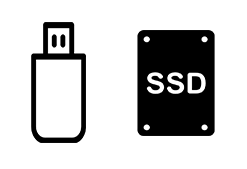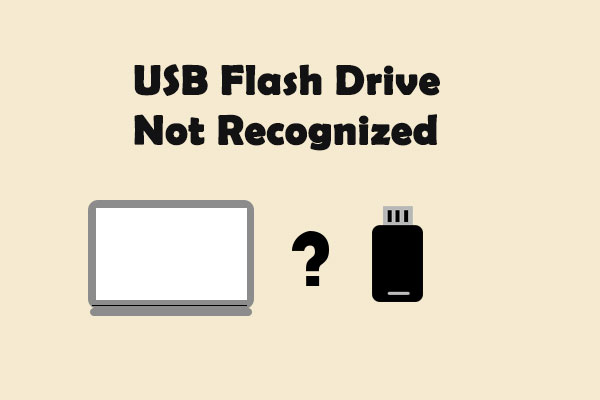Flash storage has been put into use for more than 30 years and it is still popular at present. Solid State Drive is the storage that uses integrated circuit assemblies as memory to store data and becomes more and more popular in the 21st century. To know the difference between flash storage and SSD, please read this post.
Flash Storage & SSD
How much do you know about the solid-state storage medium? You must be familiar with flash storage and SSD (which appear in many devices). Here, I’ll start by introducing flash storage and SSD in order to discuss flash storage & SSD.

What Is Flash Storage
The flash storage refers to the drive that uses flash memory to keep data for a certain period of time.
- As an electronic and solid-state storage medium, the flash memory was developed in 1980. Fujio Masuoka designed it when he was working at Toshiba, circa.
- Later, in 1987, the flash memory made its debut.
- Then, the first commercial flash chip was produced by Intel in 1988.
What Is SSD
The SSD (Solid State Drive) consists of some memory chips on a circuit board, according to a base level. In general, an In/Out interface (in the form of PCIe or SATA) is included; it is responsible for power supply and data transfer.
PCIe SSD Or SATA SSD, Which Is The Best One For You?
The traditional HDD requires an actuator arm to read and write data by moving across on a spinning magnetic platter. Unlike it, the SSD uses NAND flash memory and has no moving parts. This contributes a lot to the increase of speed and the decrease of damage possibility.
Comparison of Flash Storage and SSD
- Flash storage uses flash memory to keep data while SSD adopts NAND flash technology for mass storage.
- SSD consists of a disk controller, a DRAM cache, and NAND flash while the non-volatile memory contained in flash storage is NOR or NAND.
What if you need to recover data from a USB flash drive, but it can’t be recognized? Please read this:
NAND Flash and NOR Flash
- With NAND flash, the drive can write or erase data much quicker. Besides, it can achieve more dense storage capabilities. The NAND flash is not a good choice for the embedded use cases in which byte-level access is needed; that is because it writes and read data at a block level.
- It takes relatively more time for NOR flash to write or erase data. Yet, why NOR flash is a more suitable choice than read-only memory (ROM) chips? The root reason is that it offers byte-level random access. The NOR flash is suitable for mission-critical applications and embedded use cases (for instance, the computer firmware or the embedded electronic device). It is used by both SSDs and flash memory cards for mass storage.
Lifespan of Flash Storage & SSD
Flash Storage Lifespan
The lifespan of the flash storage is limited: the number of times that a block can be erased and rewritten is finite. What’s worse, it will be decreased sharply since the NAND flash memory becomes denser with the application of the multi-level cell technology.
- The capacity of SLC NAND is low, but it can provide about 100,000 write/erases per block. As for the MLC NAND (two-bit), it offers 1,000 to 3,000 cycles (in applications with high capacity) and 5,000 to 10,000 cycles (in applications with medium capacity). The TLC NAND (three-bit) provides around 1,000 cycles.
- The 3D NAND provides higher write/erase cycles. The cycles of 3D MLC NAND are among 6,000 to 40,000. The cycles of 3D TLC NAND and 3D QLC NAND (four-bit) are among 1,000 to 3,000 and 100 to 1,000.
SSD Lifespan
Different from flash storage, the number of times a block can be read on SSD is not limited.
The lifespan of SSD is often measured by TBW (Total Bytes Written). For instance, a 2 TB Intel 660p SSD will be rated for 400 TB if it adopts 3D QLC NAND; a 2 TB Intel 760p SSD will be rated for 1152 TB if it adopts 3D TLC NAND.
